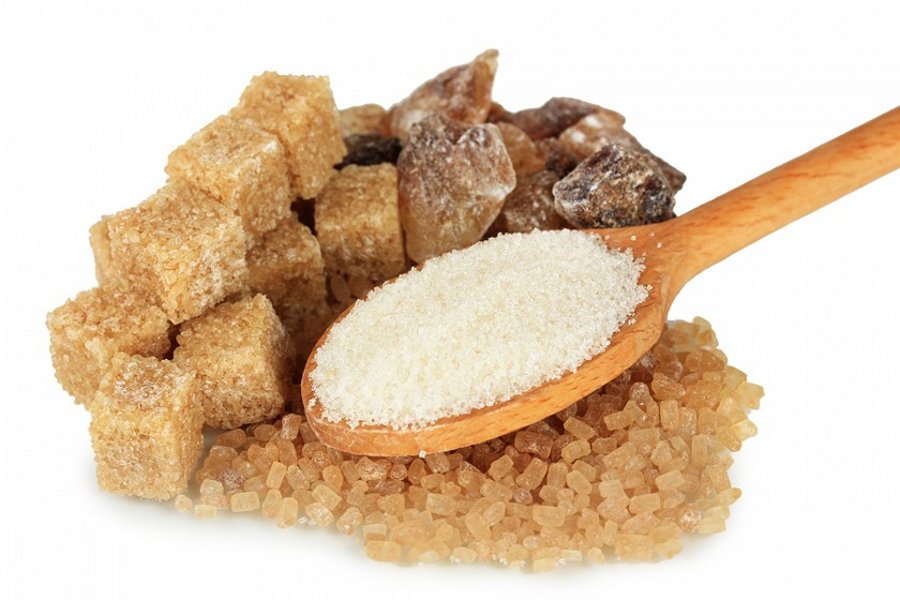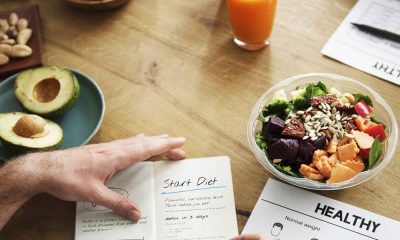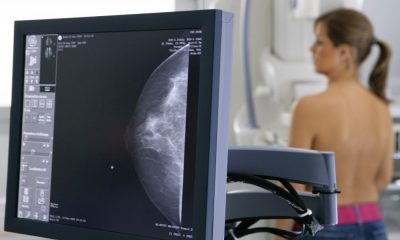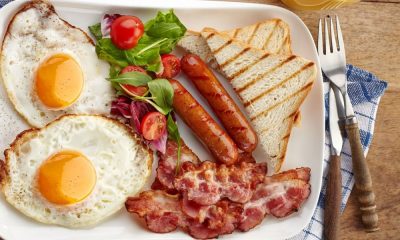Health
8 Mistakes That Are Slowing Your Weight Loss

Have you ever wondered why you cannot use those extra pounds faster? Well we do have the right answers for you. Read on about the eight mistakes that are slowing your weight loss.
1. You eat too fast
Ever notice how most thin people take their time to eat? One trick to losing weight is to eat at a slow place. If you have hard time losing weight then you’re probably doing the exact opposite – you’re eating way too fast! Slow down now. If you ever want to lose some weight, don’t make the mistake of racing to the finish line with every meal. Take your time and enjoy your food.
We can’t blame you for treating your meal like some hot dog eating contest. We live in a fast-paced world – always busy and ever-hurried. Skipping meals only makes it more difficult to take smaller bites and eat at a slower pace, since by the time food is on our plates, we’re already too famished!
Whenever you eat too fast, you consume more calories than you need without realizing it. That’s because as soon as you start eating, it takes 15 to 20 minutes for your brain to send out signals that you are full. So whatever you eat within 15 to 20 minutes after you start a meal will be taken in by your body without giving you the feeling of fullness, even though you’ve actually had too much in one sitting. Eating slowly allows you to eat less and will still leave you feeling full by the end of the 20-minute time limit.
Research proves the connection between weight gain and how fast we eat our food. One study, which was presented at the North American Association for the Study of Obesity, found that overweight men and women consumed fewer calories when they ate slower than their normal eating pace. In Japan, a study of 1,700 young women showed that eating slowly gave them the feeling of fullness faster, resulting in less calorie consumption during meals.
2. You skip breakfast
Unless you want to gain weight faster, you should never skip breakfast – or any meal of the day for that matter. People usually have the misconception that if they skipped meals, they would eat fewer calories in a day and lose weight. On the contrary, those who skip meals consume more calories in a day compared to those who ate three meals daily. And there are several studies to prove it.
Researchers from the University of Nottingham found that skipping breakfast results in increased food intake later in the day. Participants of the study were regular breakfast-eaters and were either given cereal or no breakfast at all. Tests show that participants who ate breakfast ate 17 percent less calories during lunchtime compared to those who didn’t eat breakfast at all. Participants who didn’t eat breakfast reported feeling hungrier than they usually do later in the morning prior to breakfast.
One study by scientists at Imperial College London involved 21 healthy, non-obese individuals who skipped breakfast. After skipping breakfast, researchers discovered they craved high calorie foods more than they did healthier options. Among the foods they craved were cake, chocolate, and pizza. But they found healthy foods like fish, vegetables, and salad as unappealing. When the group was given breakfast and given the same taste 90 minutes later, they did not experience the intense cravings they had for high calorie foods. Based on these findings, researchers believe forgoing the most important meal of the day tricks your brain into thinking it wants high calorie foods which would otherwise make you fat.
3. You drink too much calories
Besides water, what other beverages do you drink on a regular day? You probably have sodas, smoothies, coffee with sugar and cream, beer, wine, and some sweetened juices here and there. Unlike plain water which has zero calories, these drinks do. And calories equal weight gain. According to a recent study, Americans get 21 percent of their daily caloric intake from beverages alone. Think we’re bluffing? Here are the numbers to prove it:
- A 20 oz. smoothie has about 410 calories
- You add 30 calories to your diet for every 8 oz. cup of coffee that has sugar and cream
- A 12 oz. can of soda has 150 calories on average
- Just 5 oz. of wine contains up to 130 calories
- A typical 12 oz. can of regular beer has 160 calories, while light beer has 110
- 16 oz. of sweetened tea gives you 160 calories
Of these fattening drinks, wine is perhaps the most surprising. A new study shows that people who claim to be “average wine drinkers” consume an excess of 2,000 calories per month. It makes sense. A glass of wine has about the same calories as a slice of cake.
Wine is not the only alcoholic beverage that slows your weight loss however. Mixed drinks are far much worse, since the juices and sodas used to make them are full of sugar. A shot of tequila, which has 100 calories, can turn a margarita into a 500-calorie drink – the same calories as a cheeseburger. A tall glass of pina colada is the equivalent of a doughnut on the calorie scale.
4. You eat large portions
Portions of meals and snacks have become significantly larger in the past decade. The trend is all over the food industry. Fast food chains like McDonald’s not only serve large fries, burgers, and sodas but have managed to supersize them. Frito Lays sells “individual” bags of potato chips which could easily feed more than one mouth. And because these large servings tend to be cheap, and finding normal servings like an 8 oz. soft drink or a 1 oz. bag of snack food has become too much of a challenge, it’s easy to fall into the trap. Studies show that people unintentionally consume more calories when they are provided larger portions.
Rolls and his colleagues tested adults by giving them different sized portions of macaroni and cheese on different days without telling them if they were getting more or less than the previous serving. It was discovered that participants ate 30 percent more calories when given the largest portion, 1000g, compared to the smallest portion, 500g. After the study, only 45 percent of them said they noticed the differences in portions served. The group tested the same participants with another food. They were given 6-inch, 8-inch, 10-inch, and 12-inch subs on 4 different days. Based on their findings, the people ate more as the sandwich became larger.
Another research looked into the eating habits of men and women who were given potato chips as an afternoon snack. They were served the same looking bag of potato chips which increased in size over five separate occasions. The men and women ate 37 percent and 18 percent more respectively with a 170g bag compared to the 85g bag of chips. When they were served dinner hours later, they did not adjust their consumption, increasing their daily caloric intake.
5. You eat out a lot
Eating out used to be a way of celebrating birthdays, anniversaries, graduation, and so many others. Today, it has become commonplace. We eat out during breakfast, snack breaks, lunch, and even dinner. In the United States alone, the number of eating establishments increased by 75 percent from 1977 to 1991. While there are many restaurants Americans can choose from, the cheap prices and larger portions served in fast food chains are hard to resist. According to studies, eating out, especially in fast food restaurants, is associated with increased caloric consumption and a greater weight.
There are many reasons as to why eating out is associated with higher calorie consumption and heavier weight. In addition to the larger portions served to customers, restaurants are equally guilty of hosting buffets. This surely gives you more value for your money, but it also means you will likely eat more than you’re supposed to, and subsequently take in more calories.
You know what else restaurants are guilty of? High calorie drinks. More often than not, they serve soda and sweetened juices or iced tea as beverages. To make it worse, these drinks are usually available in massive glasses which could hold 32 ounces – four times the amount of a single serving of soda. Even the small soda sold in fast food restaurants has 16 oz. which is twice the standard serving size.
The nutritional information provided by some restaurants may give you a sense of relief, but be warned that most of these are inaccurate. According to TIME Health, restaurant meals usually contain 18 percent more calories than they claim to be.
6. You eat mindlessly
Have you ever tried eating while watching the television or talking with your friends? You probably ate more than you normally do. Not minding the food you consume will cause you to eat more than the usual, because you will be distracted with other things. Scientists call this phenomenon “eating amnesia” or the act of placing food in your mouth without even realizing how much you’ve eaten. Before you know it, you’ve had more than a plate of pasta and several glasses of soda in a single sitting.
It’s easy to overeat when you don’t pay attention to your food. The best way to deal with this is to portion your food. Portioning beforehand allows you to limit the food you eat when doing something else. With large packages of cookies for example, set aside a single serving. When you’re with other people, you can give them separate containers with one serving each instead of placing everything in one bowl. Food labels will indicate how many pieces of food average per serving. If you’re eating out with friends or family, avoid lengthy conversations until everyone is done eating. That way, everyone could eat healthily by being mindful of what they consume.
It also helps to keep high calorie foods out of sight. People have the tendency to eat more if they have quick access to food. So if you had access to a whole bag of potato chips, you could easily rack up a thousand calories while watching the TV. Just imagine having access to the following foods and their calorie count, and the thought of mindlessly eating them will haunt you!
- 3 Oreo cookies give you 160 calories, about the same amount of calories in 20 potato chips.
- An ounce of French fries is equivalent to 88 calories, just slightly above the 75 calories 3 Hershey kisses contain
- Pop 12 peanut M&Ms into your mouth and you get 125 calories straight up
- One and a half piece of a donut hole has 100 calories
7. You drink plenty of water during meals
Drinking water before meals can help you shed off those excess pounds faster by jumpstarting your metabolism, allowing for the quick digestion of your food and preventing it from being stored as fat in your body. And some people would say that drinking water during meals contributes to weight loss. Water is undeniably filling to the stomach, so drinking plenty of it while eating means you will eat less food right? Sorry to disappoint you, but this is a common misconception. Drinking large amounts of water during slows your weight loss, and here’s why.
Water does give a feeling of satiation. But because it has zero calories, it’s also fairly easy to digest and easily absorbed by the digestive tract. You may feel full for the time-being but as soon as it’s absorbed, you will feel hungrier faster. Within an hour or two after drinking water with a light meal, you will look for something else to eat – and more likely, it would be an unhealthy snack. That’s where you end up eating more calories. Drinking water during meals also slows down digestion by hampering the acidity of stomach juices, a necessary component for breaking down food.
You can avoid this by limiting water consumption before and after meals. More specifically, you should drink a glass of water 30 minutes before a meal, and 30 minutes after. Water before meals triggers the digestive process and promotes weight loss. Water after meals relieves thirst and rehydrates you without taking up much space in your stomach.
8. You’re guilty of add-ons
Admit it. You’ve poured too much maple on your pancakes and drizzled them with chocolate syrup when no one was looking. Those “healthy” green salads you eat as a snack? They’re probably soaking in high fat dressing. Even those burgers which are already pre-loaded with calories cannot escape from you. You’ve added more mayonnaise, ketchup, mustard, or dressing in them too, which adds up to their total calorie count. Add-ons are bad for you, and it’s a common mistake people make that slow down their weight loss.
Don’t let those “healthy” salads and meals fool you. While a grilled chicken with salad on the side seems healthier than a fat burger, most wouldn’t care to notice their sauces and extra toppings. These add-ons literally add to the calories present in food. A Caesar’s salad from McDonald’s that has crispy chicken and dressing usually averages at 520 calories, about 100 more calories than a Quarter Pounder. Burger King’s Whopper Jr. that has mustard and mayo only has 290 calories, while their more “healthier” option, the Tendergrill sandwich which has honey mustard dressing, has a whopping 470 calories.
Before you order food at a restaurant, take the time to look into its toppings. Bacon, cheese, croutons, and creamy dressings are just a few examples of high-fat toppings commonly added to foods. Be wary of the salads most especially. The healthiest salads don’t have many toppings and instead use oil-based dressings for flavoring. Unlike creamy dressings which are loaded with calories, oil-based dressings barely have any.
Originally published on Healthy Diet Base
You may like

Gal Gadot Gives Birth to Third Child

Ariana Grande Is Giving Away One Million Dollars for a Good Cause

Eurovision song contest 2019 won by the Netherlands

Will there be season 5 of Lucifer series?













